Geez, I have not been updating the site for a while but that doesn’t mean I’m missing in action. It’s just that I have been busy…
… busy with so many things! Over the last few months, have done a lot of cooking, baking, have carried out lots of home improvement projects (to word it nicely, I fixed a couple of water leaking issues in the house), built a few wooden racks, trellis for the garden… and lots more. Err, sounds like I have been domesticated!
Anyway, out of sight does not mean out of mind. I still listen to music, I still build stuffs. It’s just that the way monica is at the moment, there isn’t much we could do now. I mean we could carry out some modifications here and there, but these likely will only result in incremental improvements. As I’m no cable lover, I want big jumps in sonics! Not teeny weeny, “let’s listen to it AB again if we could detect a difference”.
But even for a 16 bit DAC chip, TDA1545 is still very capable today, as shown in this Old but Gold article. Feed it higher sampled material and it won’t disappoint you, as long as it’s 16 bit. Hey, it can even take in 384kHz sampled material! As explained in the article, you need higher sampled material, not more bits.
But these days, the marketing folks have you believe you need 24 bit. In fact, there are also 32 bit DACs. So 16 bit is no longer in vogue. Makes you feel like your digital system is not complete if you have “less bits”. It’s like you feel inadequate without the latest Ipad or Iphone. Damn those marketing folks!
To be honest, while 24 bit is touted as “better”, more attention got to be paid to the power supply as noise could easily overwhelm the last few bits. [Why aren’t more folks talking about this?] Many years ago, the late John Camille did a presentation at a Vacuum State of the Art Conference meet on the subject of noise and shared this excellent info which I have taken the liberty to show here.
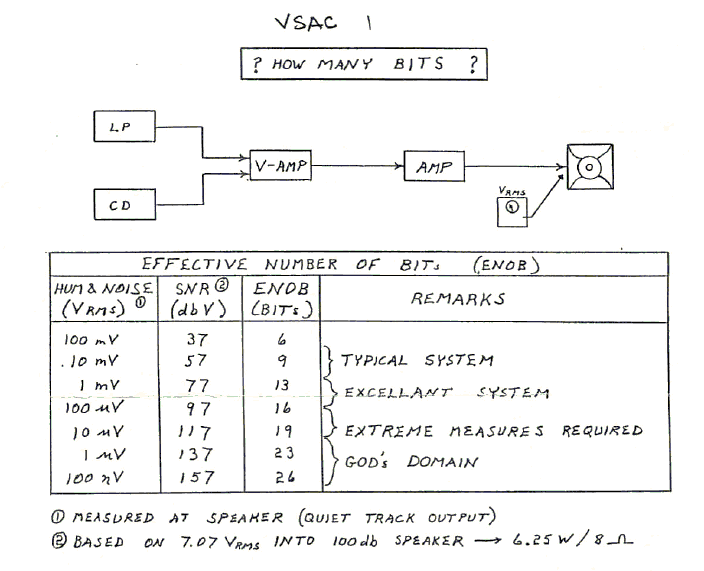 .
.
Note that unless your system noise is way below 100uV, at best you could only hear up to 16 bit (more likely worse!) even though you are using your state of the art 24 bit or 32 bit DAC.
Note that even Mr Camille says >23 bit is GOD’s DOMAIN.
That said, I’m no match for the marketing crowd!
So if you can’t beat the crowd, join them right? So I have a look at 24 bit DACs. Most do not interest me. The ones that do interest me cost too much. I simply can’t justify spending >USD30 for a DAC chip [later though, my perspective has changed somewhat].
However couple months ago, CKL on the forum pointed this 6moons review of the TotalDac. As I just glanced through, I thought it was using industrial DAC chips for audio purpose [yeah, stupid me]. It was only later when I reread the review, I realized it’s a discrete DAC! Built using ladder resistors! Interesting!
I did some more reading and got some help here. Sonic Illusion’s Tom Browne has been a great help. His page here has sufficient info for you to whip up your own discrete DAC but like all things audio, the devil is in the details. Tom is also working on his production discrete DAC – Sunrise, so you have off-the-shelf options other than the TotalDac.
Alright, after all this talk, so did I get one working? Here’s my mock up.
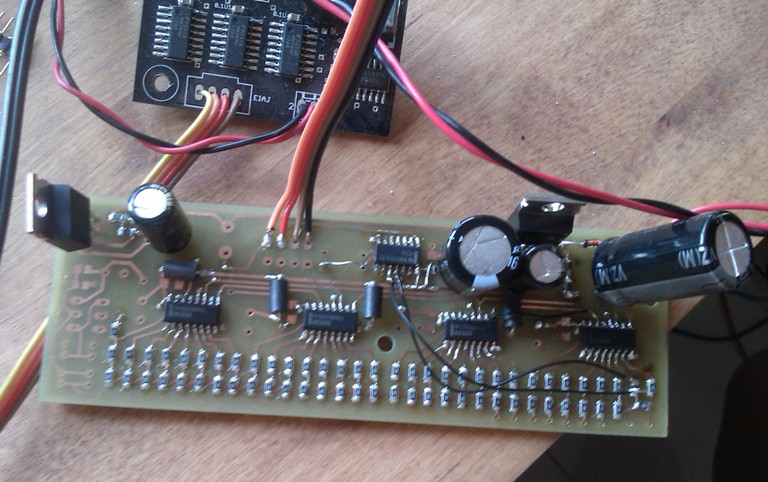
Obviously, it’s quite messy! Still, the concept works. From a 1kHz WAV file, I could scope out a 1kHz sine wave at the DAC. Nice! Note that Black Crow as shown above, is not used at all.
Next step, is to make it stereo and solve a few more other problems before we have a stereo DAC. Long way to go but it’s a start!
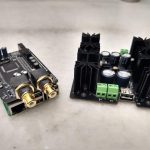
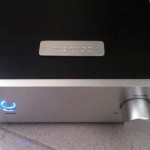
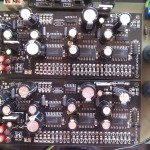
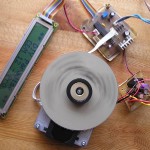
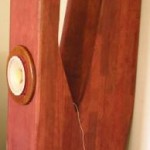

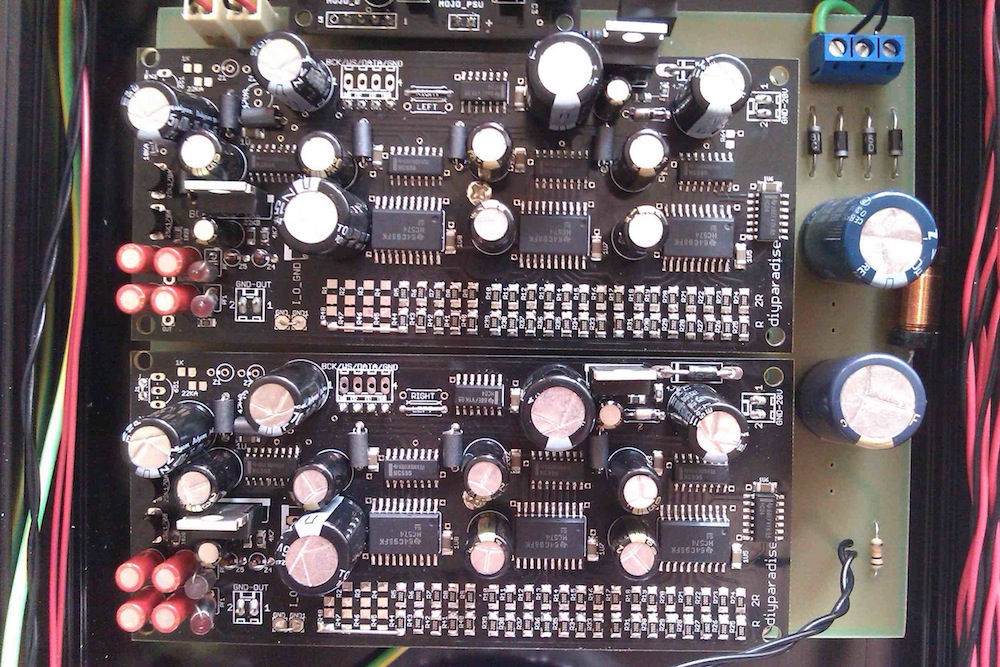


The Totaldac is not the only one using ladder resistors.
For example, the LAVRY DA2002, dCS, and MSBs of the world are all using similar technology to converting series of bits into music.
These manufacturers produce the finest DACs on the market, albeit all at stratospheric price levels.
By the way the Totaldac is not among the cheapest stuff you can get 😉
Interesting to see what you will come up with.
Take care and keep up the good work.
Jean-Paul.
bon jour jean-paul!
thx for completing the list! obviously i don’t know much about commercial stuffs. 🙂
i hope to have something to listen soon… we’ll see…
yeo
Hey dude, you’ve got some french 😆
Bonjour Yeo,
I own (beside Monica 😉 ) a MSBtech DAC III Platinum Signature, and I had a chance to listen to the Totaldac (however not is my system) . These guys are the best DACs I ever listened to, although a little pricey :-*
What you are working on is really interesting, but I can tell you the expectations are very high.
Jean-Paul.
hi jean-paul
the pcb is almost done but the biggest problem i have right now is getting the resistors.
best tolerance resistors we could get now is 0.01%. 0805 smd cost usd6 each!
but even at 0.01% tolerance, this is only good for 14 bit (1/10000). and we need at least 48 resistors per channel!
so i could understand why it’s so expensive. getting the resistors is already a killer!
yeo
Hi Yeo,
I know that companies such as MSB Tech and dCS have the resistor ladders they use in their DACS trimmed specifically for them.
Vincent Briand (the Totadac’s designers) claims he uses Vishay Foil 0.01% resistors, may be the same as the ones you mention.
We are far off the Monica prices 😥
Would be interested in listening at your stuff :-*
Cheers.
Jean-Paul.
Hello Yeo, I’ve read this and also read about the Total Dac web site. I want to make one but as you already mentioned , it is not easy to find matched resistors. But I like to give it a try. Do you think you sell the prints in a while? I hope so becouse the total/discrete dac print is very expensive. That are no prices for us DIY freaks.
MSB is very famous in HK. We regard MSB is the best sounding DAC here but it is very expensive. If Yeo can provide an affordable replacement, we will be in heaven.
How are you doing…………..are there/here any up dates about this subject? I need an affordable print like many others do. I hope so!! :-*
hi gert-jan
do you mean do i sell the pcb? sorry, no intention for doing this at all.
the chips and resistors are all surface mounted, necessary in order to keep the signal path short. it’s quite a nightmare to build.
if i were to offer pcbs, the support alone, and the remote trouble shooting…. wont leave much hair on my head!
yeo
Sorry Yeo………..so that means very much and very long saving money to buy original . Impossible for me I think. Thanx
It is not the first time that there has been a confusion about bits. Looking at the table we see, that Vinyl records at lets say 70dB (already excellent) would have a equivalent resolution of about 12 bits, must be wrong, because we all know, that their resolution power is often better than digital.
My Denon cartridge has an output of about 250u(micro) Volt and about nanovolts at quiet sections. I have to be careful, that the tiny signals can be heard, this is difficult, but possible, and necessary for a lively reproduction. Nobody would deny, that these tiny signals are audible if amplified.
Will be continued
Resolution power and signal to noise ratio is not te same. Its just the difference that counts, so even a noisier amp like a tube can reproduce a difference of 100nV, because there are already louder bits playing. Nevertheless I would like to stress the importance of a noisefloor as low as possible.
Most of us still listen to CDs, and there are excellent dacs around, but 24bits are an improvement, and even 32bit dacs are not nonsense, the “spare bits” can be used for mixing and processing in the studio or for a loss-free digital volume control at home.
hi andre
thanks for your comments. appreciate it.
yeo
Simply forgot to say your dac is still better than many commercially produced ones.
I am building a preamp with EVA, Nelson Pass buffer and a selector. There will be an evaluation of EVA pre and transformer volume control. (Sorry off topic).
Fun project … but better than ESS. And how about upsampling?
yup, a friend compared to ess, no comparison brother.
this dac is non-oversampling. i don’t believe in upsampling.
yeo